The B-17 civil sister: Boeing 307 Stratoliner
In the first post-war decades, the name Boeing was to become synonymous with the rapidly developing cosmos of civil passenger aviation. Epoch-making designs such as the Boeing 707 revolutionised both the market and aviation technology. At the end of the 1930s this was not yet foreseeable. At that time Boeing was one of the major established manufacturers and had a varied history, but it was still far from a dominant position in passenger aviation.
Even before and especially after the US entered the war, Boeing grew to become the largest manufacturer of heavy bombers for the USAAF. This tradition was to be continued into the early years of the Cold War with the B-17 and designs such as the B-47 or the B-52, which are still flown today.
Boeing's most successful civilian design at the time was the Model 247, a twin-engine, sleek, ten-passenger aircraft. However, when work began in 1935 on a large, four-engined passenger aircraft, the company had other things in mind. Based on the design of the B-17 bomber developed at the same time, a luxurious aircraft was to be developed that could carry a good thirty passengers in a pressurised cabin on long-distance flights. The realisation of a pressurised cabin had the inestimable advantage of being able to fly at high altitudes undisturbed by the weather and with low fuel consumption. The wings, the tail and the landing gear were taken from the B-17, which was under development.
Both PAN AM and TWA expressed interest and ordered six and five aircraft respectively before the maiden flight. On 18 December 1938, the Stratoliner first flight took place, which, without being a prototype in the classical sense, should have been delivered to PAN AM as the first production aircraft.
However, this was not to happen. The tragedy occurred during a pre-flight in front of representatives of the interested Dutch KLM: although the 307 started to spin at high altitude, through work with the engines the rudder pressure could be generated again, but the machine had built up so much speed that the following recovery manoeuvre went beyond the limits of its structural strength. With the wings removed and the tailplane breaking away, the first Stratoliner killed all ten occupants.
Tests in the wind tunnel showed that the dangerous spinning behaviour could be defused by installing an extended tail fin in combination with a redesigned tail fin. This measure also became standard for the close relative, the B-17, from the E-version on. So the constructive interlocking of the two designs is also evident in this characteristic detail of the appearance.
Apart from TWA and PAN AM, other prominent buyers for the Stratoliner soon appeared. Howard Hughes had one of them converted into a record machine. Even if his planned round-the-world flight - in record time of course, how could it be otherwise! - was not carried out in the end, the machine could later be seen as the most luxuriously equipped "The Flying Penthouse", bearing witness to the eccentricity of the billionaire.
During the World War the available Stratoliner under the designation C-75 was taken over by the USAAF and used as a VIP transport aircraft on long distances such as for crossing the Atlantic. Civilian flying was severely restricted during the war years, which of course did not help the 307 to develop its qualities-. After the war, it soon became apparent that passenger aviation was also facing fundamental reorientation due to the turbine engine, whether jet or turboprop. For the Boeing 307 Stratoliner, this meant that its great time was over before it had really begun.
Production figures for the 307 remained correspondingly low, with only ten units produced. After the war, the Stratoliner was quickly taken out of service by the major airlines, but some of them were to be flown for decades by smaller operators. The last surviving Boeing can be admired in airworthy condition at the Steven F. Udvar-Hazy Center/ Smithsonian Museum.
To the model
When I learned a year ago that Roden would be releasing a Stratoliner in 1:144, the decision to purchase and build was quickly made. However, a kit from Roden also meant for me personally that I had to look around for new decals.
A first look inside the box confirmed my prejudices. As much as the plastic parts filled me with anticipation, the look of the kit's own decals already gave me the impression that they would not work. But that, as I said, is only my personal opinion and should not discourage anyone from trying their use and achieving a beautiful result!
The only objection to the in all other areas praiseworthy kit parts is the very low panel lines. Here I would have wished for a little restraint in keeping with the scale, as their depth seems to me to be exaggerated in view of the small size of the forms. On hull and wings I have tried to soften this impression by sanding over them.
The kit instruction leads you through the few steps of building the boat. Only in the design of the engine nacelles/exhaust systems some questions remained open for me, whereby I hope to have answered them more or less correctly by the results of my research.
The markings for the present representation of a TWA machine from 1940 are from Flying Vintage Decals, which I can recommend without hesitation and warmly, because of their high quality and their problem-free workability.
Although 1:144 is certainly not my traditional home scale, I am very happy to have been able to build this exciting aircraft in the quite carefully designed forms of Roden. Personally, I have not only enjoyed the project but also was motivated to take a trip towards "micro-scale" every now and then!
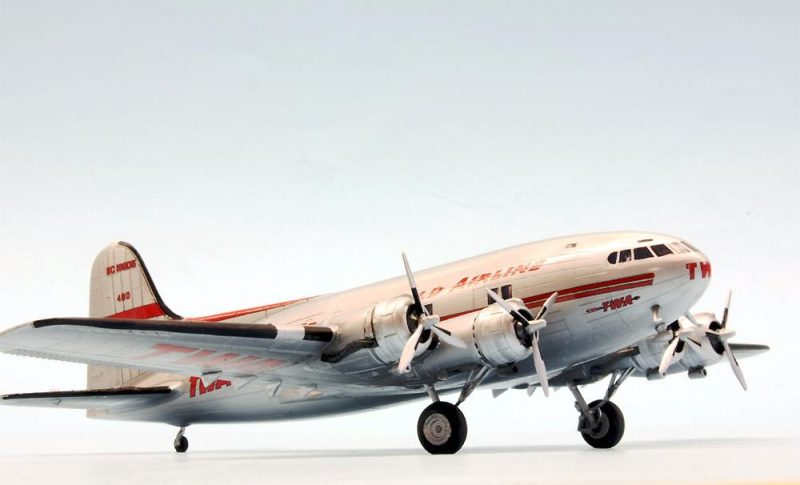
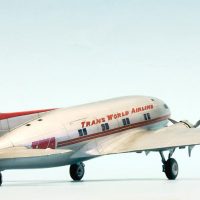
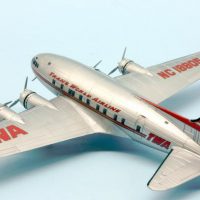
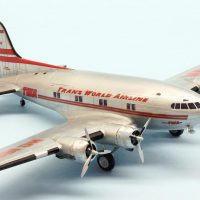

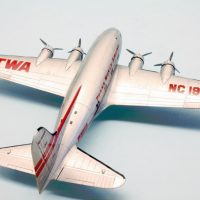
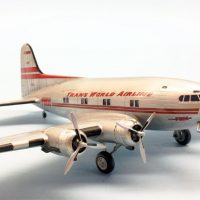
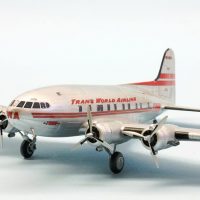
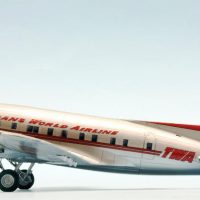
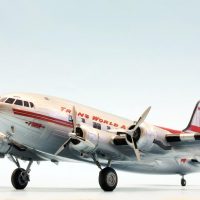
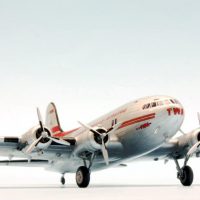
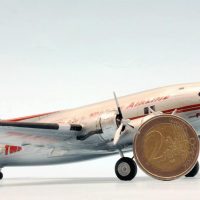
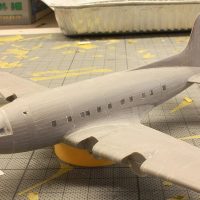
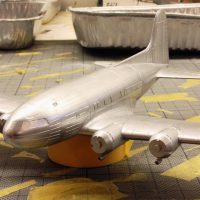
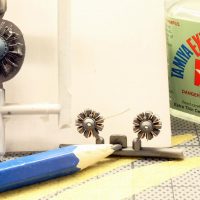
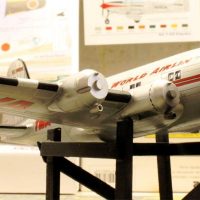
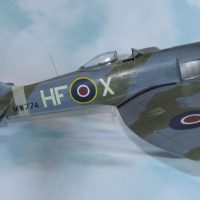
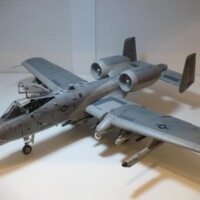
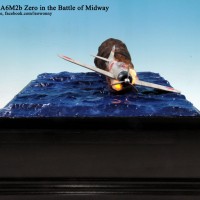
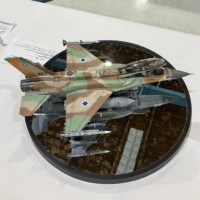
That's a truly astonishing result in this small scale, Roland!
Great historical presentation, as always!
Well done!
Having built the 1/72 Maquette military version, not being totally happy with the not so shiny outcome, I am planning to redo it as a civilian Stratoliner, as i've kept the Trans World decals!
Wow, a 307 in 1:72! That is interesting. I will gladly take a look at your Stratoliner - and look forward to your future project!
Thank you for your words!
Very nice work as usual Roland.
I remember seeing one of these at Tan Son Nhut in 1964. I later read there were at least two of them engaged in "don't ask/we won't tell" activities in SE Asia.
Any clues on that camo scheme, Tom @tcinla?
It was silver - operated by one of the "spook lines"
Mmmmmm, might be also tempting to redo my Stratoliner like this...
Thanks for info, Tom @tcinla!
Such a little gem! Well done - and now we are all eager to see the result of the 1/72 version re-visited by @fiveten
I'll have to look one up as it has been on my to-do list ever since the beautiful restoration by Boeing employees years ago of a flying example that sadly ended in the water (but that is another story)
Thank you for sharing the build Roland@rosachenhofer
Yep, eager to redo her, my friend @airbum!
Looking fantastic, Roland.
Hard to imagen that it is only 1/144 scale.
The NMF finish is beautiful.
Thought it was 1/72 just seeing the headline photo - lovely build!
Nicely done! Looks great.
Love the prop airliners. 1/144 is what is available. Beautiful job and aircraft build...
Inspiration to start on my own 1/144 Wonders.
Thank you for sharing..